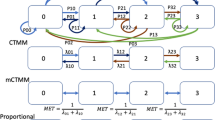Abstract
Development of effective medical countermeasures for biodefense is vital to United States biopreparedness and response in the age of terrorism, both foreign and domestic. A traditional drug development pathway toward approval is not possible for most biodefense-related indications, creating the need for alternative development pathways such as the FDA’s Animal Rule. Under this unique regulatory mechanism, FDA-approval is based on adequate and well-controlled animal studies when it is neither ethical nor feasible to conduct human efficacy studies. Translation of animal efficacy findings to humans is accomplished by use of modeling and simulation techniques. Pharmacokinetic and exposure–response modeling allow effective dosing regimens in humans to be identified, which are expected to produce similar benefit to that observed in animal models of disease. In this review, the role of modeling and simulation in determining the human dose for biodefense products developed under the Food and Drug Administration’s Animal Rule regulatory pathway is discussed, and case studies illustrating the utility of modeling and simulation in this area of development are presented.





Similar content being viewed by others
References
Public health security and bioterrorism preparedness and response act of 2002 (2002), pp 107–188
Project bioshield act of 2004 (2004), pp 108–276
U.S. Food and Drug Administration (2002) New drug and biological drug products; evidence needed to demonstrate effectiveness of new drugs when human efficacy studies are not ethical or feasible. 21 CFR Parts 314 and 601
U.S. Food and Drug Administration (2015) Product development under the animal rule: guidance for industry
Bergman KL (2015) The animal rule: the role of clinical pharmacology in determining an effective dose in humans. Clin Pharmacol Ther 98(4):365–368
Bergman KL (2009) The animal rule and emerging infections: the role of clinical pharmacology in determining an effective dose in humans. Clin Pharmacol Ther 86(3):328–331
Deziel MR, Heine H, Louie A, Kao M, Byrne WR, Basset J, Miller L, Bush K, Kelly M, Drusano GL (2005) Effective antimicrobial regimens for use in humans for therapy of Bacillus anthracis infections and postexposure prophylaxis. Antimicrob Agents Chemother 49(12):5099–5106
Kao LM, Bush K, Barnewall R, Estep J, Thalacker FW, Olson PH, Drusano GL, Minton N, Chien S, Hemeryck A, Kelley MF (2006) Pharmacokinetic considerations and efficacy of levofloxacin in an inhalational anthrax (postexposure) rhesus monkey model. Antimicrob Agents Chemother 50(11):3535–3542
Jernigan DB, Raghunathan PL, Bell BP, Brechner R, Bresnitz EA et al (2002) Investigation of bioterrorism-related anthrax, United States, 2001: epidemiologic findings. Emerg Infect Dis 8(10):1019–1029
Jernigan JA, Stephens DS, Ashford DA, Omenaca C, Topiel MS, Galbraith M, Tapper M et al (2001) Bioterrorism-related inhalational anthrax: the first 10 cases reported in the United States. Emerg Infect Dis 7(6):933–944
Centers for Disease Control and Prevention (2001) Update: investigation of bioterrorism-related inhalational anthrax -Connecticut. MMWR Morb Mortal Wkly Rep 50(47):1049–1051
Hendricks KA, Wright ME, Shadomy SV, Bradley JS, Morrow MG, Pavia AT, Rubinstein E, Holty JE, Messonnier NE, Smith TL et al (2014) Centers for disease control and prevention expert panel meetings on prevention and treatment of anthrax in adults. Emerg Infect Dis. doi:10.3201/eid2002.130687
Bower WA, Hendricks K, Pillai S, Guarnizo J, Meaney-Delman D, Centers for Disease Control and Prevention (CDC) (2015) Clinical framework and medical countermeasure use during an anthrax mass-casualty incident—CDC recommendations. MMWR Morb Mortal Wkly Rep 64(4):1–21
U.S. Food and Drug Administration (2012) Drugs@FDA drug approval package—raxibacumab clinical pharmacology and biopharmaceutics review. http://www.accessdata.fda.gov/drugsatfda_docs/nda/2012/125349Orig1s000ClinPharmR.pdf. Accessed 24 Feb 2017
U.S. Food and Drug Administration (2016) Drugs@FDA drug approval package—anthim clinical pharmacology and biopharmaceutics review. http://www.accessdata.fda.gov/drugsatfda_docs/nda/2016/125509Orig1s000ClinPharmR.pdf. Accessed 24 Feb 2017
U.S. Food and Drug Administration (2014) General clinical pharmacology considerations for pediatric studies for drugs and biological products: guidance for industry (draft)
U.S. Food and Drug Administration (2017) Commentary on non-labeled dosing of oral amoxicillin in adults and pediatrics for post-exposure inhalational anthrax. https://www.fda.gov/Drugs/EmergencyPreparedness/BioterrorismandDrugPreparedness/ucm072106.htm. Accessed 24 Feb 2017
Andrew MA, Easterling TR, Carr DB, Shen D, Buchanan ML, Rutherford T, Bennett R, Vicini P, Hebert MF (2007) Amoxicillin pharmacokinetics in pregnant women: modeling and simulations of dosage strategies. Clin Pharmacol Ther 81(4):547–556
Centers for Disease Control and Prevention (2010) 2000 CDC growth charts. Accessed 6 June 2016
Acknowledgements
The authors would like to thank various members of the Office of Clinical Pharmacology staff, including Philip Colangelo, Seong Jang, John Lazor, Fang Li, Kellie Reynolds, Zhixia Yan, and Jingyu Yu, for their contributions.
Author information
Authors and Affiliations
Corresponding author
Ethics declarations
Conflict of interest
The authors declare no conflict of interest.
Rights and permissions
About this article
Cite this article
Bergman, K.L., Krudys, K., Seo, S.K. et al. Modeling and simulation in dose determination for biodefense products approved under the FDA animal rule. J Pharmacokinet Pharmacodyn 44, 153–160 (2017). https://doi.org/10.1007/s10928-017-9516-2
Received:
Accepted:
Published:
Issue Date:
DOI: https://doi.org/10.1007/s10928-017-9516-2




